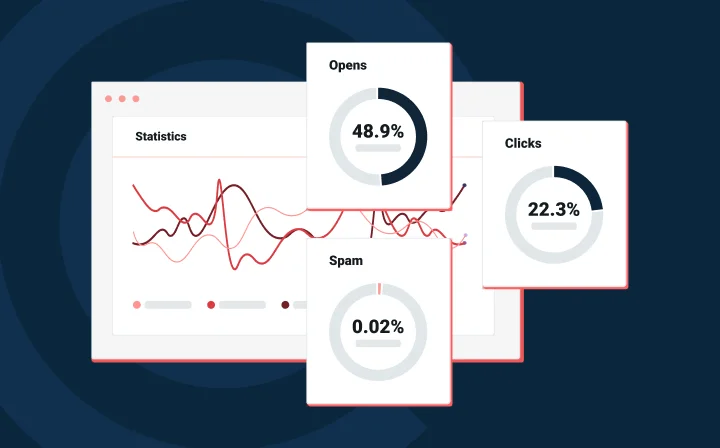Deliverability
Deliverability services: Decoding deliverability with the experts

Deliverability

Deliverability is like operating a ham radio – it’s been around a while but most people don’t know how to use it. Like a radio, deliverability relies on external factors to transmit messages. Where radios battle signal strength and interference, deliverability battles protocols and spam filters. The question is, do you know how to get your message out?
In 2025 Mailgun conducted its annual state of email deliverability report and asked senders their view on email deliverability and their grasp on what email deliverability means.
Out of the 1,100 people who took our survey, only about 5% described their job role as “Deliverability Specialist.” The truth is, there aren’t too many deliverability specialists roaming across the email landscape, even though we need them. So, if you’re like 95% of senders, read on to understand why you need high-quality deliverability expertise to support your email program.
Email deliverability is just the act of getting your message into your recipient’s inbox. That’s it.
What makes this seemingly simple act complicated are the differences between protocols and standards among mailbox providers, the filters set up to weed out spammers, and the increasing need for sender identity authentication.
But why is email deliverability so important? Well, if emails don’t land in the recipients’ inbox and are not read…what’s the point of sending them?
According to survey respondents, the biggest benefits of prioritizing email deliverability are improved customer satisfaction and increased email ROI. Makes sense – after all, that is why we send messages in the first place. The goal of email communication is to market a service, convey a story, or transmit something that impacts consumers while also benefiting the business.
When it comes to numbers, email’s ROI is already high, but when you partner with an ESP it increases further. In Forrester’s Total Economic Impact (TEI) study commissioned by Mailgun to evaluate our platform and services in 2023, Forrester found that, over the course of three years, Sinch Mailgun delivered a 264% return on investment (ROI) and a $454K net present value (NPV).
ROI and customer satisfaction can tell us a lot about deliverability. It’s one thing to land in the inbox, it’s another to provide quality messaging to subscribers that leads to conversions or meaningful connections. Engagement is a bit part of the deliverability picture.
Email deliverability is sensitive and can feel kind of superstitious. It’s like that old sailor’s adage, red sky at night, sailor’s delight, where subtle changes in atmosphere can be telltale signs of an incoming storm.
The biggest deliverability hurdles exist because mailbox providers, postmasters, and even ESPs all aim to automate the filtering of actual useful content from spam. It’s very easy to be mistaken for spam if you don’t know how to navigate deliverability, and this can greatly impact engagement.
In our deliverability survey, we found that:
The number one challenge for senders is understanding all the elements at play. Email deliverability is ultimately built through a combination of technical requirements and engagement strategies that senders need to know about:
But that’s not it. On top of knowing what impacts your deliverability, you need to understand the best practices across each of these areas. What’s the right way of building an email list? How should handle disengaged subscribers? What are the best authentication practices for your email program?
Finally, you need to be able to read your email metrics and track any slight fluctuation in engagement to detect potential issues. For example, a sudden increase in bounce rate can mean you might be on a blocklist, but it could also mean you haven’t properly warmed your IP, that you’ve purchased emails, or have suddenly increased your sending and the volume is being flagged as suspicious.
As you’re probably realizing, deliverability can be a pain in the keester. Especially if it’s a relatively new concept to your team.
We’ve talked a lot about best practices and some of the elements that impact email deliverability. Now, let’s talk about how to implement it, what are some good deliverability resources, and when you should think about lighting up the bat signal.
If you’re going to go it alone, we won’t stop you. Deliverability is something that can be learned and if you have the internal resources to dedicate, managing your email deliverability in-house can be successful.
Step one is to understand the basics. Take the factors of email deliverability we outlined earlier and look at your current sending practices. A great place to start is by analyzing what you’re currently doing that works well, and what might be hurting you.
Step two is to get a bird’s eye view of how deliverability works and is being implemented by senders on a larger scale. Staying connected and up to date on deliverability trends is key to ensuring you adapt your strategy to the latest developments from mailbox providers and consumer habits.
Wondering how to do that? We’ve got you covered:
For those with more complex needs or larger email volumes, learning deliverability can be really hard. And it’s not always a straight-forward science.
Deliverability success depends on an individual sender’s needs, but trying to craft a bullet-proof strategy when there’s a lot at stake can prove impossible without the right type of support and constant monitoring. That’s why sometimes, the best and most strategic solution is asking for help.
This is where deliverability services come into play. These services are generally offered by experts who have been in the deliverability trenches and have the information bank necessary to conquer deliverability issues – everything from warming IPs, to best sending habits, list cleaning practices, and real-time troubleshooting for challenges like a spam trap hit or a sudden blocklisting.
Data has started to become the modern-day equivalent to a telephone switch board. There are so many points of data that a sender needs to pay attention to, and then know how to plug that data into their sending strategy. The job of a deliverability specialist is to help assist with untangling that data, understanding it, and prioritizing how it should be used. Additionally, there may be data that is not currently used that should be included in sender’s measurements and a specialist can help you find that as well.

If you’re sending important emails, then deliverability is the most important art (and science) to master. It improves the experience for your customers and recipients, which increases your engagement, ROI, and contributes to your overall reputation.
Using professional deliverability services not only helps you build the structure of your email program, but to monitor all of your email channels.
When an incident arises and gut-punches your email communications channel, it can impact both marketing and transactional email efforts, stopping your recipients from getting their password resets, confirmation emails, or shipment notifications, which can lead to a decrease in customer satisfaction and email ROI. Deliverability services equals a faster resolution.
In fact, The Forrester TEI study found that professional email deliverability services improved incident response time and resolution.
Sending an email is a lot more complex than just clicking a button and crossing your fingers for a high open rate. Get the help you need by enlisting the best deliverability experts to both build and monitor your email program. Check out Mailgun’s Deliverability Services and talk to a strategist today.